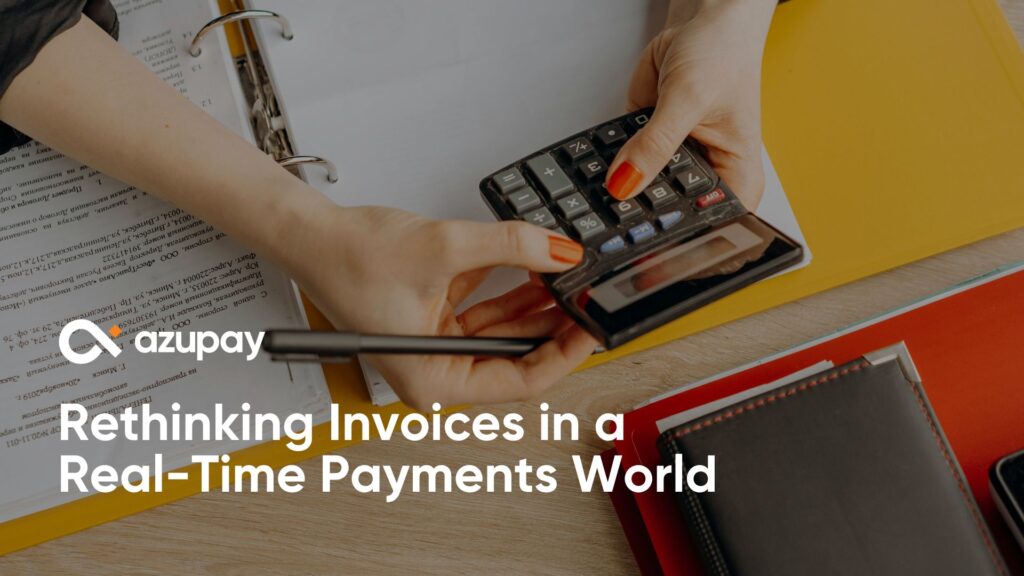
Invoices have always been more than just bills. They’re structured requests for payment, containing three critical elements:
-
What is owed
-
Who it should be paid to
-
The data that allows the payer and payee to reconcile the transaction
Connect these pieces intrinsically with real time account to account settlement and user authentication: now you have new payment methods ideal for modern e-commerce (and upcoming agentic commerce) worlds as well as for the established business processes using invoices as we’ve always known them.
For centuries this information has moved slowly and separately — from paper slips in the mail to PDFs attached to emails. Even in today’s digital-first economy, the invoice remains mostly a static document, disconnected from the payment itself. That separation is the root of costly errors, fraud risks, and painful reconciliation.
But what if an invoice could be tokenised with the payment details?
What is a Tokenised Invoice?
A tokenised invoice fuses the request-to-pay information (amount, due date, reference, payee details) into a single, unique payment token. Rather than exposing static account numbers or loosely attached reference fields, the token itself is the secure container for all instructions.
When a customer pays to this token — whether by scanning, copying, or clicking — the payment rail validates that the token matches its encoded instructions. The result: the right amount, sent to the right account, with the right data, every time. If this is done within the customer’s familiar banking the trust of bank-grade security helps both the customer and the supplier.
Why it Matters
1. Atomicity Without Blockchain
In the early days of blockchain, innovators spoke about “atomic payments” — transactions that either succeed in full or fail entirely, removing partial outcomes. Tokenised invoices achieve the same principle on existing real-time account-to-account rails like Australia’s NPP. Either the invoice is paid correctly and reconciled instantly, or the payment does not proceed at all. No repair or return of failed payments.
2. Stronger Fraud Protection
Invoice interception remains one of the most effective and damaging frauds in business payments. A tokenised invoice avoids exposing bank account numbers altogether. The customer never sees or types them, eliminating the opportunity for substitution in transit.
3. Perfect, Instant Reconciliation
Because the invoice identity is embedded in the token, payments and records reconcile at the moment of settlement. No more manual matching, unallocated funds, or payment repairs. Businesses can issue receipts, release goods, or provision services with immediate confidence.
4. New Use Cases Become Possible
Invoices were once limited to delayed settlement contexts — utilities, B2B services, government rates. Tokenisation combined with real-time rails unlocks instant contexts such as eCommerce, POS, and even conversational commerce in call centres or chat flows. The line between “invoice” and “checkout” begins to blur.
A Strategic Shift for the Industry
For payment providers, tokenised invoices mark a shift from thinking of PayID, PayTo, QR codes, or bank transfers as “just pipes,” toward viewing them as carriers of structured payment logic. This framing positions real-time payment systems not merely as faster settlement engines but as trusted conduits for secure, automated commerce.
And for enterprises, governments, and platforms, it reframes the invoice as more than a one-way instruction. It becomes a digitised business process delivering business efficiencies, improved customer experience all baked into the payment rail itself.
The Bigger Picture
As account-to-account payments continue to expand globally, tokenised invoices represent one of the clearest ways to deliver trust, automation, and user experience gains without adding new intermediaries. It’s an elegant example of how innovation doesn’t always mean inventing new rails. Sometimes it means reimagining how we use the ones we already have.
The next time you look at an invoice, imagine it not as a piece of paper or a PDF, but as a living token. A dynamic digital key that unlocks safe, instant, and reconciled payments at the speed of business.


